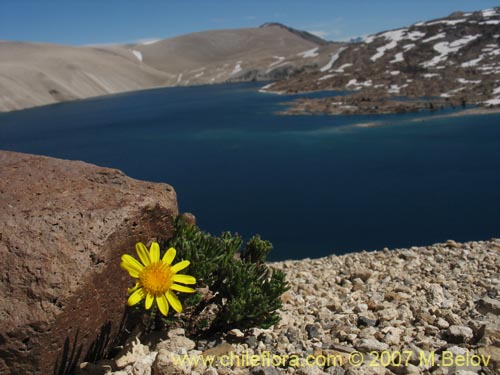than any other country in the world*
Stop ISRAELI WAR CRIMES and GENOCIDE

|
ISRAEL MURDERED MORE CHILDREN
than any other country in the world* Stop ISRAELI WAR CRIMES and GENOCIDE Your Seeds Source...
| ||
| ||
If you are in for some off-road driving in the area of Laguna Maule, this one is an extremely beautiful excursion very worth the efforts. And to do it, you will need plenty of these efforts! There is a hidden lake at an altitude of about 2900 meters, well above the Laguna del Maule and which is completely enclosed by mountains, and does not have a water outlet.
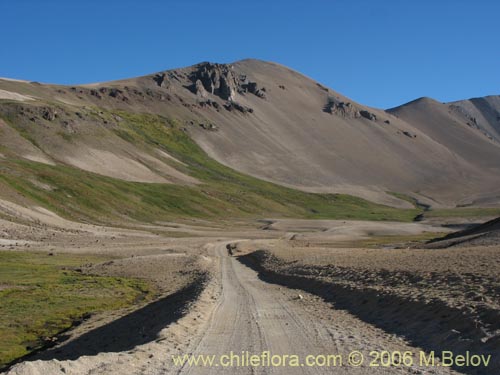
All the water can only seep slowly through a narrow ridge separating it from the main valley where the international road passes, creating “vegas,” Andean swamps, which seem to appear out of dry sand and fall down along the slopes, creating rich pastures where the cows decimate the native Chilean plants.
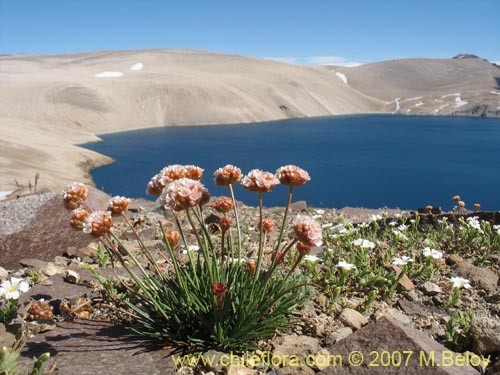
This route is not especially difficult in technical terms, because the slopes have a maximum inclination of only about 20 to 25 degrees, however, the problem is that the slopes are covered by very fine sand and volcanic ash, and in order to be able to drive up, you would have to reduce tire pressure at least down to 10 – 12 psi, maybe even less. That implies that you have to have a pump and you run the risk of loosing a tire or two due either to dismounting or to very sharp rocks along the way in the upper part of the trip. So basically it is going to be a calculated gamble.
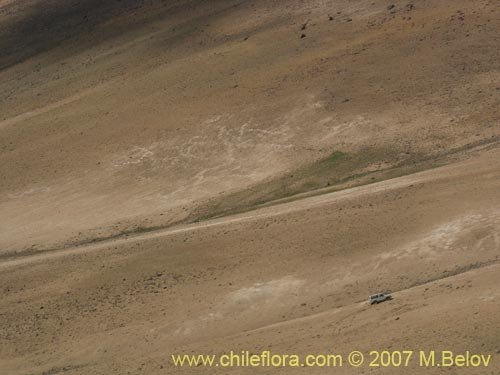
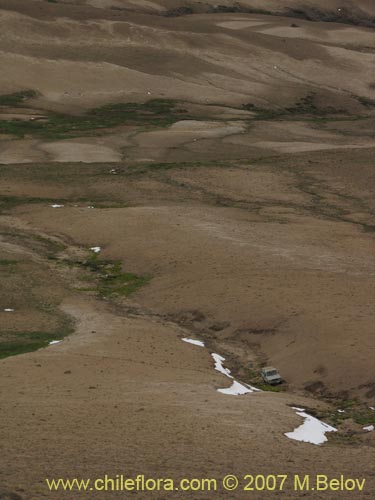
I have been trying to get up in my Trooper there several times over the past two years, and finally found a nice way in. Drive along the international road up to the Argentinean border, then drive back exactly 300 meters, there you have to go off-road to the left, returning slightly (maybe at an angle of about 120 degrees to your left). First you will climb easily to an absolutely flat terrace about 50 vertical meters from the road. Facing the main slope, you will see another terrace some 150 vertical meters higher. It may seem to be very difficult to tackle, but if you go slightly to the right, you can avoid the sandier and softer central parts. Once on top of that terrace, go full left and start the climb in the marked area (see photo).
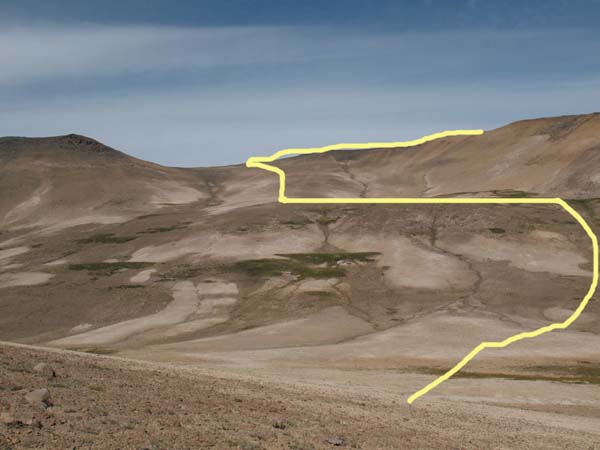
You will have soon to drop the tire pressure to about 10 psi, otherwise you do not stand the slightest chance. Climb straight close to the soft ridge, and at the very end turn sharp left to avoid a boulder area just at the top. Here you have to re-inflate the tires to about 20 - 25 psi to clear some boulder areas (about 300 meters of very, very slow, and very, very jumpy driving on knife-like stones), and now you are free to roam on a flat, sandy plateau almost 5 kilometers long and 3 kilometers wide with stunning scenery in all directions, and with the satisfaction that you are probably the second (after me) person ever to roll on these primeval sands...
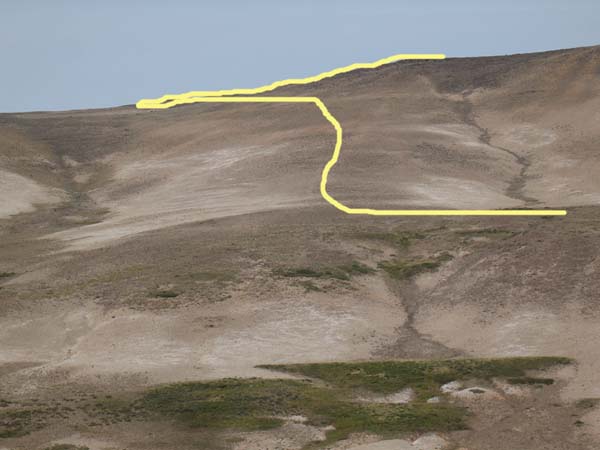
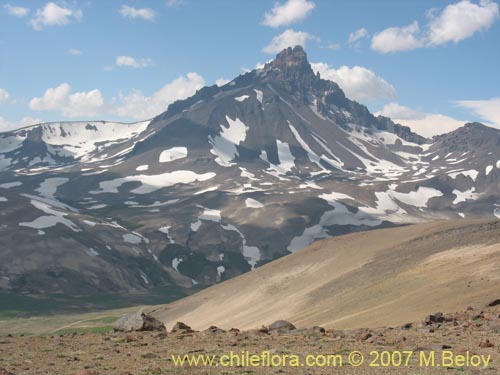
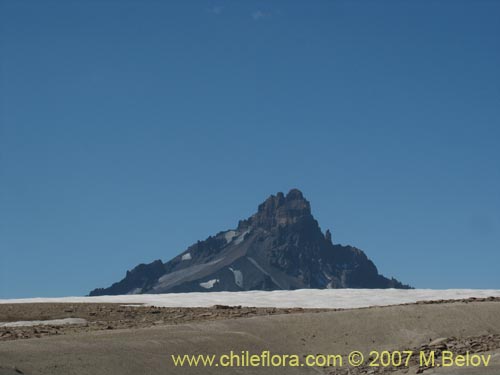
Well, if your objective was to see plants, there you might experience a slight disappointment – there are about half a dozen species growing on the plateau, and probably walking on foot you would do the trip much faster. To get up and down you would need about 2 hours. The only consolation is that there are occasional groups of very strange-looking Viola atropurpurea to be seen, and apart from that only Nassauvia revoluta, Armeria maritima and Cerastium arvense and one Senecio will break up the monotony of this high altitude desert.
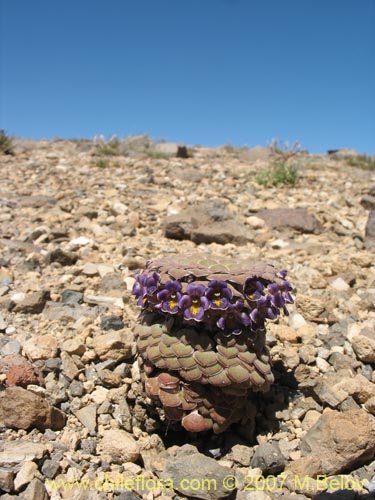
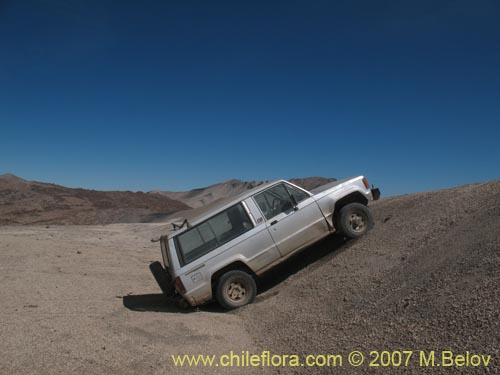
Go south, and soon a view to the Cari-Launa lake will open up. It is really an unforgettable sight, a dark blue lake amidst almost white ash, with a tongue of rugged lava field flowing into the lake at one side and creating a landscape from a different planet.
